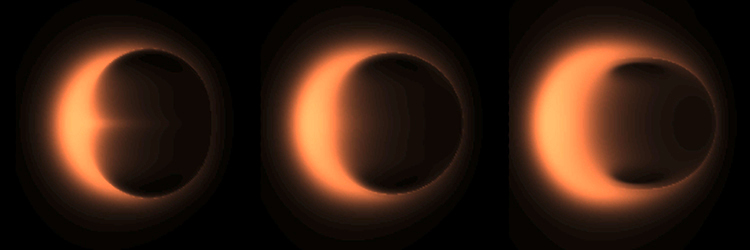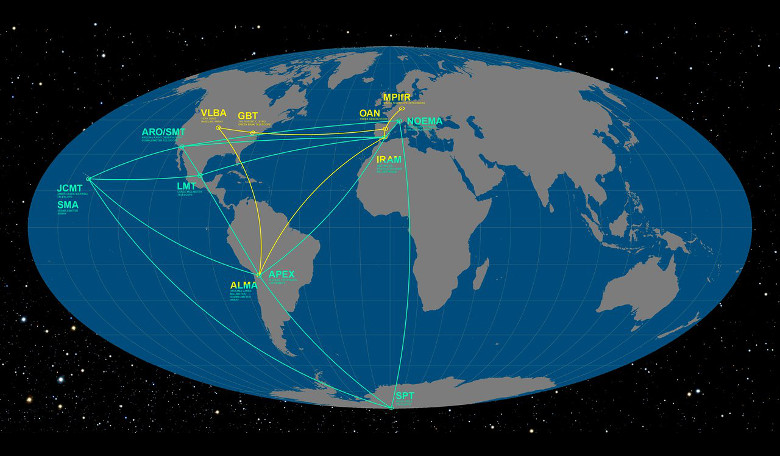Observations are now underway by the Global mm-VLBI Array (GMVA) and the Event Horizon Telescope (EHT) to take a never-seen-before image of the event horizon surrounding the supermassive black hole at the centre of our Galaxy – Sagittarius A*.
These two international radio telescopes have now been joined by the Atacama Large Millimetre/Submillimetre array (ALMA) to link up and create an Earth-sized virtual telescope that stretches across the globe from the South Pole to Hawaii to Europe.
This technique, known as Very-long Baseline Interferometry (VLBI), uses telescopes thousands of kilometres apart to link together and act as one giant telescope. It can also take advantage of the different wavelengths of light the different telescopes usually observe in. By using this approach, scientists can achieve a far higher resolution than normal – up to 2000 times that of the Hubble Space Telescope – which is crucial for detecting an object that does not emit light and is over 26 000 light-years from Earth.
The plan to image a black hole has been a working progress for many years, but has in the past been hindered by the technology available at the time. Now, with telescopes like ALMA on board which has undergone several upgrades in order to participate in the collaboration, including an extremely accurate atomic clock that is critical to link ALMA to the entire VLBI network, along with new hard drives to store the sheer amount of data produced by the observations, the ambitious endeavour is now within reach.
Observations with the GMVA started on the 1st April and will run until 4th April, 2017, then the EHT will take over from 5th April to 14th April, 2017. However, the results are not expected to become available until the end of 2017, due to the processing required from the massive amounts of data that will be collected during the two observation periods.
Naturally, the outcome of these observations is eagerly awaited by the astronomy community along with enthusiasts worldwide. It is hoped that the observations will allow scientists to understand how material accretes around black holes, as well as how extremely fast jets of gas that blast out from them are formed. Other goals include testing Einstein’s theory of general relativity which predicts a roughly circular “shadow” around the black hole.

Simulated images of the shadow of a black hole: General relativity predicts that the shadow should be circular (middle), but a black hole could potentially also have a prolate (left) or oblate (right) shadow. Future EHT images will test this prediction. Credit: D. Psaltis and A. Broderick.











